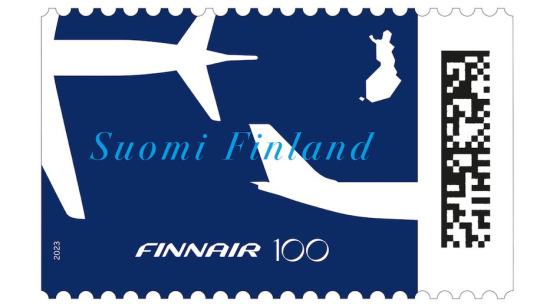#merging different databases
Explore tagged Tumblr posts
Text
Merging Different Databases: A Guide to Seamless Integration
Merging different databases is a crucial task for businesses and organizations aiming to consolidate data, enhance operational efficiency, and improve decision-making. Whether you're integrating databases due to a merger, system upgrade, or need for unified reporting, the process requires careful planning and execution. This article outlines the key considerations, challenges, and best practices involved in merging databases.
Why Merge Databases?
There are several reasons why organizations may need to merge multiple databases, including:
Business Mergers and Acquisitions: When companies merge or acquire other businesses, they often need to consolidate their data to ensure operational consistency and unified reporting.
System Integration: Organizations might use different software platforms or databases for various departments. Merging databases ensures that all information is centralized, leading to streamlined operations.
Data Unification: Merging databases can help eliminate data silos, allowing all departments or stakeholders to access the same, up-to-date information. This leads to better collaboration and more informed decision-making.
Challenges of Merging Different Databases
Merging databases comes with several challenges, which, if not properly managed, can lead to data loss, inconsistency, or operational disruptions.
a. Data Inconsistency
Different databases may use varying data formats, structures, and types. For instance, one database may store dates in "MM/DD/YYYY" format, while another uses "YYYY-MM-DD." Such inconsistencies can lead to errors if not addressed during the merging process.
b. Duplicate Records
When merging databases, duplicate entries can be a significant issue. The same data or customer may exist in both databases under slightly different names or IDs, leading to redundancy and confusion.
c. Data Integrity
Maintaining data integrity during the merging process is crucial. This means ensuring that all data relationships, such as foreign keys and unique constraints, are preserved in the merged database.
d. Compatibility Issues
Different databases may be running on different systems (e.g., SQL Server, MySQL, Oracle), and migrating between these platforms requires careful handling of queries, indexing, and stored procedures to avoid compatibility issues.
Best Practices for Merging Different Databases
To ensure a smooth and successful database merge, follow these best practices:
a. Perform a Thorough Data Audit
Before merging databases, conduct a comprehensive audit to understand the structure, data types, and integrity constraints of each database. Identify discrepancies or conflicts, such as inconsistent field formats or duplicate records, so you can address them before the merge.
b. Data Cleansing and Standardization
Data cleansing involves removing duplicate records and correcting errors before merging the databases. Standardizing data formats ensures compatibility, making it easier to merge fields from different databases without conflict.
c. Use ETL Tools
ETL (Extract, Transform, Load) tools are commonly used for data migration and integration. These tools extract data from multiple sources, transform it into a common format, and load it into the target database. Popular ETL tools such as Apache NiFi, Talend, or Microsoft SQL Server Integration Services (SSIS) can streamline the process.
d. Test Before Final Integration
Before the final merge, run tests on a sample dataset. This allows you to identify and fix any errors or inconsistencies before committing to a full-scale merge. Testing helps prevent data loss and ensures all operations function correctly in the merged system.
e. Backup Data
Always backup both databases before proceeding with the merge. In case something goes wrong during the process, having a backup ensures you can restore your data and avoid permanent losses.
Post-Merge Considerations
After the merge, it’s essential to perform thorough testing and validation to ensure that all data has been integrated correctly. Check for issues such as missing records, broken links, or mismatched data types. Additionally, update any documentation or user guides to reflect the new database structure.
Conclusion
Merging different databases can be a complex but rewarding process that brings enhanced efficiency and better data management to an organization. By following best practices—such as conducting a thorough audit, using ETL tools, and testing before final integration—you can minimize risks and ensure a seamless database merge. Whether you're merging due to business growth, system upgrades, or organizational consolidation, proper planning and execution are key to a successful outcome.
For more info visit here:- data cleansing deduplication
0 notes
Text
dude, why does accidentally messing up on RYM feel scarier that accidentally messing up on MusicBrainz :[
#maybe it's just because i use musicbrainz more#but i was trying to add an album#but once i added it a realized that it was already there?? and i somehow didn't see it??#and then i got rlly upset bc now it's all messed up#and i can't even find a way to get rid of it#i assume it'll be found and removed by a moderator at some point#but it's just like#''yea..... i fucked it up... im sory....... yea can you remove it pls...... thx........''#''pls dont kick me off ur music database site im trying :(''#like with musicbrainz i've kinda figured out the ways i can fix it if i fuck up#it's rlly annoying when i realize i fucked up#but it's usually just ''well now i have to wait a week for these two fucking things to merge but it's fine ig''#idk. just feels bad :(#especially bc i'm like. sort of a child still.#so it's like ''yea i was fuckin' around on your site with my baby brain and i fucked it up. can you fix it pls. thanks.''#''please let me try again. i promise i'll try not to fuck it up again with my baby brain that can't understand hwat the fuck a label is :('#''.....i fukced it up again....... :(''#like i feel baddddd#but my dumbass is just obsessed with adding things to databases. even tho i'm kinda shit at it.#i've always been like this too!!! idk why!!!#i used to make hundreds of half empty google docs for every character i can think of (including ocs)#and when i decided i wanted to do it in a different format. i spent like. a month going through and changing the format for all of them.#and it's just. what i did in my free time. absolutely no reason for it. just because.#this is just how i am for some reason.#rookii rambles
0 notes
Text
I am building so many hcs for Moon in my mind I love her so much enough so to think abt ancient politics girlie better consider herself lucky (I say, as if fictional politics becoming to long dead societies isn't my favorite shit to explore)
#rat rambles#rain posting#anyways I like the idea that moon was first built during a time when the original nation that lived in the area had been split into two#she was built near one of the borders in a location that many of the organizations that had been carrying out iterator constructions at the#time had been eyeing for a while but avoiding because of the high tensions between the two nations and how itd be hard to not use resources#from across the border from either side to keep her operational#eventually though one of them was given the thumbs up and started construction leading to a lot of conflict#for a long time it was mostly just diplomatic arguments through messages and meetings but eventually as moon neared completion the topic#of which nation she should be considered to belong to became a major point of contension and there was a minor war over it#eventually the nation that had initially backed her construction gave up due to some natural distaters#so by the time moon was activated she was considered an iterator of the other nation and as such she had quite a bit of adapting to do as#while she had both of the primary languages of the nations in her database pretty much all of her database and internal functions were#written by and with the laguage of the initial nation that backed her construction#eventually this stopped mattering as the two nations ended up merging and the newly founded government remerged the two languages#I say remerged as they were initially different branches of the primary laguage of the initial nation that had falled apart#although moon found it nice to be able to use many of the words she wasnt allowed to use before it was annoying to have to once again#adjust to speaking a different language primarily#although she definitely did find it funny watching the others struggle to use the new language organically as she had a head start in#understanding how a lot of the 'new' stuff was actually used in practical conversation as opposed to straight translation#many iterators that were around during the two nation era will still usually exclusively think in their local language and occasionally#speak in it fully in more casual settings if they get that luxury#now ofc language evolves over time so all iterators have had to adjust how they speak but generally speaking they still are most#comfortable with their original language as its what they were built to speak
0 notes
Text
The League's Property damage video nights are an insane ritual on the Watchtower, where their largest screen is hijacked so that dragged footage from CCTV cameras, government databases, and social media of the most hilarious, costly disasters can be played.
Some notable mentions:
Superman got confused/distracted trying to save a building cut in half during a fight and accidentally permanently fused it onto a totally different building (they decided to merge companies)
Aquaman flooding a small space to fight someone and the resulting wave lifts all the cars on the street and sends them sailing
One of Oliver's explosive arrows blows up fireworks in warehouse district (leading to several flights getting grounded or rerouted)
Diana lassoed something flying and it yanked her so hard that she took out a traffic light and dragged it fifteen blocks with her
Barry tripped over something while running and was too shocked to phase through anything, going crashing (and bouncing) off multiple cars, a fire hydrant, taking out a post box before finally faceplanting to a halt
Hal used the classified schematics from a next-gen fighter jet to make his own construct, causing the Pentagon to lose all the money they'd invested in it
#Will reblog with more lol#I just got tired for a bit#dc comics#justice league#hal jordan#clark kent#barry allen#the flash#diana prince#wonder woman#superman#green lantern#oliver queen#green arrow#jla#justice league headcanon#batman
760 notes
·
View notes
Note
I've noticed your predator/alien franchise doesn't have anything for xenomorph. Let's change that lol. Could I get something that has a similar storyline like the one that says dark reader on it the one where the reader is obsessed with aliens.. It's made me curious tbh
Xenomorph x Dark. Reader


Mx. Anonymous, you read my mind! I was wondering when someone would request this! And you don't need to apologize, since it's fanfiction, we're just gonna say eff reality for a moment (even though the whole thing is fictional...but you get it).
Want more from me, my Infinites (I'm trying out a follower name thing lol. I'll probably shuffle through random ass names until one works)? 𝙈𝘼𝙎𝙏𝙀𝙍𝙇𝙄𝙎𝙏
☆*: .。. .。.:*☆☆*: .。. .。.:*☆☆*: .。. .。.:*☆
👽Discoveries👽 (Aliens)
Warning(s): Dark Fic (dunno if it came out as dark as I wanted), Non-con details, unprotected, triggering(?), size difference, I don't know where I went with this (this is what happens when I write parts at different times, I guess)
Sometimes experimentation leads to temptation...
✨✨✨✨✨✨
"You're crazy, [Last Name]!"
You tapped the end of your pen against your lip in thought before smiling, "Maybe, but crazy gets better results than normal. Ask any of the greatest geniuses, they'll tell you."
You were labeled as the crazy scientist because you suggested cross breeding. Between Xenomorph—or Aliens, the term used for common folk—and humans.
'It's impossible!'
'It's wrong! Don't you have any morals?' they cried.
'You want to talk to me about morals? Ha! Who are the ones who take creatures as they please and experiment to their heart's content, past what's necessary, simply for nosiness and fear of not knowing everything?'
You always shut them up any time they felt a need to comment on you.
"Sometimes the most impossible things can be made possible," you muttered as you scribbled something in your many notebooks dedicated to this theory.
You could admit you were pretty obsessed with Xenomorphs, you found them fascinating. You studied them with a passion.
You wanted one...and the opportunity came when a group of scientists arrived with a captured Xenomorph.
They were studying it to come up with a defense against them, you, among a few other scientists decided to spectate.
And all hell broke loose.
Turns out, someone from the group had gotten infected. You had to figure that out when a man's stomach burst open.
There was panic as the other scientists fell victim, until the newest creature was contained.
The two aliens were to be stored away since the team leading the experiment was now dead, until someone else decided to take it over.
That was your opening.
You took the fully grown one to your private lab, where everything was already set up.
The huge cylinder it was in was a little heavy, but you made it work. You pushed a button that would release an anesthetic-type liquid into the fluid the creature was summered in.
Once it was confirmed to be unconscious, you released it and properly restrained it, tail and all. You loved risks, but not when the result could stop your experimenting from proceeding...you can't test things if you're dead.
"Now...let's get your vitals connected to my database..." you tapped away at your screen until the patches and machinery you'd connected to it did their job, "There you are...and you are a very healthy Xenomorph."
You went through a few experiments of merging DNA samples, but something was missing. You couldn't figure out what it was.
You were disturbed from your deep thoughts by a pathetic escape attempt behind you.
"Oh, you're awake. I should introduce myself," you approached the alien carefully, "I'm your caretaker. And you're all mine for the time being."
It continued to struggle, hissing at you as you calmly took off your lab coat and put on gloves.
"Now, for a physical examination..."
Your hand slowly trailed down the alien's head and jaw, raising a brow as its struggle turned hesitant.
You heard a rumbling sound from its throat, the mouth covering muffling it.
"So...you aren't completely adverse to touch, hm?"
Then you explored its shoulders and arms, you trailed lower to its sides.
"Everything seems to be in order so far...You really are a beautiful specimen..." you sighed in fascination.
You were mesmerized and edging towards getting aroused.
And the alien could smell it, it was reacting.
Visibly reacting.
You smirked, "Oh...well, look at that. I've made the discovery of a lifetime."
So much research had been done, but never have sexual organs been found on an alien. But you supposed it wasn't common for someone to show arousal in their presence.
"Standing at attention just for me...What should I do with you?"
You were absolutely breathless.
But who could blame you, you were stretched to your limits. And there were still quite a few inches of it that didn't fit inside.
There was some defiance at the beginning, but this alien would just be the next being to know you always got what you wanted in the end.
And the hotter you got and the louder you got, ashamed defiance turned into lustful acceptance.
You balanced on your hands best you could, your feet also supporting you, but they were beginning to become less reliant the more they curled.
Its skin felt cool and smooth, a stark contrast to your heat and muscle. It made you shiver in the best ways as you slowly slid up and down.
"I think I might—keep you."
You were becoming more obsessed by the minute, perhaps your rationality was being manipulated by the smell of sex and sweat.
Or maybe because the alien tried and failed to keep itself quiet, sensitive to your every move.
A cute little virgin it was.
All yours to use as you've wanted. You could possibly get a sample once you were done, see if it gave different results.
Everything was in your control, until it wasn't.
The alien decided it'd had enough of your slow pace.
It thrusted up in quick strokes, making your body move so quickly it looked like it was shaking.
With a groan, your nails dug into its arms, then you gasp as it breaks out of its restraints.
For a moment, you think it'll attack, and it does.
It flips you under and bullies itself back into you, forcing in every inch.
A brutal attack that leaves you trying to catch your breath.
With a growl behind its mask, it pummels into you.
With fascination, you feel the bulge it creates and swear you can see it, but you're a little disoriented right now.
Your vision flashes from the pleasure and pain, your body is tingling.
"You—You're my discovery to keep," you grin.
#xenomorph#alien vs predator#alien franchise#aliens#alien fucker#dark reader#dark fic#alien dark fic#smut#lemon
189 notes
·
View notes
Text
Dizzied by an accumulated pileup of busted norms, you might have missed a presidential executive order issued on March 20. It’s called, “Stopping Waste, Fraud, and Abuse by Eliminating Information Silos.” It basically gives the federal government the authority to consolidate all the unclassified materials from different government databases. Compared to eviscerating life-sustaining agencies in the name of fighting waste and fraud, it might seem like a relatively minor action. In any case, the order was overshadowed by Signalgate. But it’s worth a look.
At first glance, the order seems reasonable. Both noun and verb, the very word silo evokes waste. Isolating information in silos squanders the benefits of pooled data. When you silo knowledge, there’s a danger that decisions will be made with incomplete information. Sometimes expensive projects are needlessly duplicated, as teams are unaware that the same work is being done elsewhere in the enterprise. Business school lecturers feast on tales where corporate silos have led to disaster. If only the right hand knew what the left was doing!
More to the point, if you are going to eliminate waste, fraud, and abuse, there’s a clear benefit to smashing silos. For instance, what if a real estate company told lenders and insurers that a property was worth a certain amount, but reported what were “clearly…fraudulent valuations,” according to a New York Supreme Court judge. If investigative reporters and prosecutors could pry those figures out of the silos, they might expose such skulduggery, even if the perpetrator wound up escaping consequences.
But before we declare war on silos, hold on. When it comes to sensitive personal data, especially data that’s held by the government, silos serve a purpose. One obvious reason: privacy. Certain kinds of information, like medical files and tax returns, are justifiably regarded as sacrosanct—too private to merge with other records. The law provides special protections that limit who can access that information. But this order could force agencies to hand it over to any federal official the president chooses.
Then there’s the Big Brother argument—privacy experts are justifiably concerned that the government could consolidate all the information about someone in a detailed dossier, which would itself be a privacy violation. “A foundational premise of privacy protection for any level of government is that data can only be collected for a specific, lawful, identifiable purpose and then used only for that lawful purpose, not treated as essentially a piggy bank of data that the federal government can come back to whenever it wants,” says John Davisson, senior counsel at the Electronic Privacy Information Center.
There are practical reasons for silos as well. Fulfilling its mission to extract tax revenue from all sources subject to taxes, the IRS provides a payment option for incomes derived from, well, crookery. The information is siloed from other government sources like the Department of Justice, which might love to go on fishing expeditions to guess who is raking in bucks without revealing where the loot came from. Likewise, those not in the country legally commonly pay their taxes, funneling billions of dollars to the feds, even though many of those immigrants can’t access services or collect social security. If the silo were busted open, forget about collecting those taxes. Another example: the census. By law, that information is siloed, because if it were not, people would be reluctant to cooperate and the whole effort might be compromised. (While tax and medical data is considered confidential, the order encourages agency heads to reexamine information access regulations.)
Want another reason? Spilling data out of silos and consolidating it into a centralized database provides an irresistible honeypot for hackers, thieves, and enemy states. The federal government doesn’t have a great record of protecting sensitive information of late.
Trump’s order does state that consolidation must be “consistent with applicable law.” On its face, the order seems at odds with the 1974 Privacy Act, which specifically limits what it calls “computer matching.” But the order also says that it supersedes any “regulation subject to direct Presidential rulemaking authority.” This president considers that a very broad category. Also, as evidenced by multiple court rulings, Elon Musk’s so-called Department of Government Efficiency has been less than meticulous in respecting current law. In more than one example, current agency officials have cited legal barriers to block DOGE’s access to information. As a result, they were placed on leave, replaced by those who were willing to fling open the silos. In addition, on March 25, Trump issued another executive order that dictated that the Treasury Department should have access to other government databases. As legal justification, it cited an obscure passage in the 1974 law that allowed federal computer matching in limited circumstances. Perhaps this loophole will be broadened to justify the massive consolidation envisioned in the silo executive order next.
Oh, and the March 20 order also gives the federal government “unfettered access to comprehensive data from all State programs that receive Federal funding, including, as appropriate, data generated by those programs but maintained in third-party databases.” That seems to mean that not only will the silos between federal and state data be compromised, but the government could get access to some information in private hands too.
While DOGE wasn’t mentioned in the March 20 executive order, getting access to personal information has been an obsession of the so-called agency since day one. The order that repurposed USDS and established DOGE mandated that all agency heads “ensure USDS has full and prompt access to all unclassified agency records, software systems, and IT systems.” The question was whether this need arose from a desire for genuine reform or something darker. Apparently US district judge Ellen Lipton Hollander holds the latter view. On the same day that the president signed the executive order on silos, she signed a temporary restraining order on DOGE’s attempt to get access to identifiable social security records. “The DOGE Team is essentially engaged in a fishing expedition at SSA in search of a fraud epidemic, based on little more than suspicion,” she wrote in her decision, concluding that DOGE was intruding into the personal affairs of millions of Americans without justification. Note that her order involved just a single agency—a mere fishing pole compared to the commercial seafood operation that could happen if social security records were consolidated with IRS data, unemployment information, military, VA, and countless others.
I’m not condemning efficiency when it comes to government operations, and I certainly don’t condone fraud and waste. Of course, the US government should do better. But DOGE isn’t operating as if efficiency were job one, even though its actual title contains the word. In covering tech companies, I often hear boasts that the process of upgrading an existing product was like “rebuilding a plane in mid-air.” But when the vehicle in question is carrying live passengers, every move must be done with extreme caution, because a mistake means catastrophe. Both President Trump and DOGE seem happy to fly the plane into a mountain, figuring they can pick up the pieces later.
Compared to some of the administration's actions involving pandemic responses, nuclear safety, and social security support, the March 20 executive order on information silos might seem like small beer. But if this order is followed aggressively, we could lose the accuracy of our databases, a good bit of our revenues, and above all, much of our privacy. We’re going to miss those silos.
14 notes
·
View notes
Note
what are your favourite shakespeare retellings/adaptations?
Of all time? Oh my gosh this is a hard question because I truly love so many.
I'll start with Hamlet, for which I'll unfortunately have to name them all because I haven't met a Hamlet retelling I didn't like (and they're all so different and doing different cool things!)
The Raven Tower by Ann Leckie This one is very loosely a Hamlet adaptation, but I love it so much as one regardless. It's a very large-scope godpunk high fantasy, but I love the focus on Horatio (my fave character) and the fact that the Hamlet retelling is more an Easter egg than an imposed story.
Antique Roman by Syd Neben Almost inversely to The Raven Tower, this is verrrry directly a Hamlet retelling. In fact, I would pitch it more as published Hamlet/Horatio fanfiction. It reminds me of Dead Poets Society and even OHSHC in weird ways, but it's such a love letter to Hamlet and Horatio's tragic romance.
Enter Ghost by Isabella Hammad This one has really been living in my head since I read it earlier this year. This is less of a retelling, and more an exploration. It is very much a book that exists to express the necessity of storytelling as a tool of revolution, comparing Hamlet to Palestinian experiences and finding parallels in its narrative. Genuinely one of the most impactful books I've ever read.
The Death I Gave Him by Em X. Liu Liu's brain is fucking massive. This sci-fi locked room thriller retelling of Hamlet is so intense and claustrophobic and weird and gay. In this version, Horatio is literally an AI database and the sentient building in which the story takes place which is so weird and SO GENIUS. I have a really long review about it here.
Smile and Be A Villain by Yves Donlon This is a historical fantasy reimagining of Hamlet. It's super diverse, and I adore the heavy political landscape used to expand the world of this play. Donlon brings the battlefield and international politics to the forefront of Hamlet here, and in doing so, makes a really refreshing argument about this story. Also historically accurate QPR between Hamlet and Ophelia!
Beyond Hamlet retellings, I only have a few I really truly adore enough to include.
If We Were Villains by M.L. Rio So... this is my favorite book of all time. It's mostly because I lived it. But this book so perfectly encapsulates the harm in higher educational theatre spaces of merge self with character, while exploring Shakespearean archetypes and turning them on their head.
The Last True Poets of the Sea by Julia Drake I am not a big YA reader, and not a big contemporary reader, but this bisexual YA contemporary Twelfth Night retelling just really captured me. It hit home.
The Stars Undying by Emery Robin This counts right? This is a sci-fi reimagining of Julius Caesar, partially the Shakespeare and partially the history. One of the most objectively perfect books I've ever read in terms of craft, and I'm SO excited for the sequel, which I assume will be a retelling of Antony and Cleopatra! (It has bi JC and bi Cleopatra and butch lesbian Mark Antony and Alexander the Great as a dead gay god who lives inside a pearl.)
Yeah, I hope that answered your question! There's definitely others I've read and would recommend, and so so so many on my TBR, but those are the ones that I would call favorite retellings.
15 notes
·
View notes
Text
Future Ghost Chapter 3
Flashback:
(Danny in the far frozen talking to a Doctor; a ghost Yeti named Doctor Bonechiller.)
Danny: So, Doc…... I have a question…. It’s something I’ve noticed…I don’t think I’ve been aging…I mean, I still look the same as I did last year. When will I get my growth spurt?
Doctor Bonechiller: Well, that’s a complex question. Ghosts don’t age like humans. We don’t change year to year like you, or well mortals do. We grow stronger with age, not weaker.
Danny: I know that….my worry is I’ll be stuck looking like a fourteen-year-old forever. Do ghosts ever age physically, or do they get stuck at the age they died?
Doctor Bonechiller: Hmmm…. yes and no. Different factors go into this. We don’t change with the years. We change with events, trauma, personality, wants, and desires. If you were a natural-born ghost child, a little younger, or even now, I’d say having a healthy parental or guardian bond would help with growing and changing.
Danny: Well, my parents are ghost hunters; I don’t know what they’d do….
Doctor Bonechiller: That may play a factor. A young ghost like yourself needs to feel safe to change. But wanting to grow will help as well, there are ghosts that never want to ‘grow’ up as you say.
Danny: Yeah, like Youngblood. I guess he’ll really stay young forever.
Doctor Bonechiller: Don’t look so glum; we’ll keep an eye on it. As a hybrid, your body might react completely differently from a human or a ghost. You are very young, only a year by ghost standards. You are a child; your body might just be finding that balance or even need years to change. As I said, multiple factors go into this, at least for us.
Danny: Jeeeezzzz that’s not comforting at all…...*sigh* thanks for help I guess….
Danny avoided Sick Bay at all costs, wary of being examined and discovered. He knew Dr. McCoy would want to do a full workup on the new ensign, as per Starfleet regulations. So, Danny hacked into the medical database, forging records indicating he had already undergone orientation examinations. Danny was lucky that Dr. Mccoy didn’t have to be the one to personally do the examination. Anyone on his staff could do it. So, it was just a matter of forging a digital signature.
He figured he’d be fine. Doctor Bonechiller said ghosts rarely get sick, and when they do, it’s not something humans can usually get, and he theorized as a halfa, the same would apply to him. In theory, anyway. The data on this was extremely limited. Danny brushed those thoughts aside; he’d be fine……. probably.
It was a risky gambit, but Danny's ghost abilities served him well, allowing him to merge his consciousness with the computer network and hack into the files he needed. He spoofed the system flawlessly, fabricating biometrics and test results that appeared normal for a human 18-year-old. Or at least what he thought was normal. His talents lay with machines and astronomy, not medicine. Well, besides the basic first aid and his experience fixing his own wounds. It probably would be fine; he’d just have to stay under the radar.
Danny jolted out of his thoughts as a large hand landed on his shoulder.
“You are alright there, kiddo? You’ve been staring at the same panel for a while.” Daryl McDonnell questioned, a concern tilted to his British accent.
Daryle McDonnell had taken Danny under his wing—quite frankly, the whole engineering department had. Danny was the youngest among their ranks, regardless of whether he was eighteen or not. There had been some speculation that the kid was lying. But his file checked out. It was not an easy thing to pull one over the ship's CMO. So those rumors died to jokes about his baby face appearance.
“I’m not a kid.” Grumbled Danny at his friend. The older man showed him a lot of patience during his first week aboard. Danny had struggled with completing basic tasks. Like completing reports, navigating the ship (often getting lost), and getting too wrapped up in awe of being in space or getting lost in his work tasks.
The other man patiently showed him how to write a good report and submit it, made sure he had access to the ship's policy and manual and even made him take breaks to eat or get off shift. Danny was so relieved that Daryle never questioned his lack of knowledge.
“haha….eh you’re the youngest one here, you get to be the kid. When you’re my age, you’ll get it.” Mcdonnell replied. Waving his hand to dismiss Danny’s annoyance.
“What when I’m 100?” Snarked Danny.
McDonnell mocked offense, grabbing his chest. “Careful, my old heart can’t take it.”
Danny ducked his head as he snickered. As a ghost, Danny had empathetic abilities, like the betazoids, but without the mindreading. He could feel the emotions of those around him. He couldn’t turn it off, and his core needed it. The emotions fed his ghostly side. The warm, affectionate fondness radiating from the lieutenant made him feel happy, his ghost side greedily absorbing the emotion and feeding it into his core.
McDonnell guided Danny away from the computer panel. “So, a few buddies of mine are having poker night in the mess hall. I’ve invited the other ensigns from the Prodigy program. You should come.” Mcdonnell offered. “I’m sure you know a few of them. I hear the prodigies are a tight-knit group back at the academy.”
“Pro…prodigy?” Danny mumbled in confusion. *Is he calling me smart? I guess I’m smart* Danny froze as he was hit with a wave of emotion. The Sharp sting of suspicion, skepticism, disbelief, and a smidge of concern. Danny looked back up at the forty-year-old man.
McDonnell gave Danny a strange look, side-eyeing him as he looked down at the shorter ensign. “You know. The Starfleet program, that allows minors into the academy. The one you would have had to have been in to be on the enterprise today? You’d have had to have joined at fourteen……or sixteen if you’re really smart. To get through the program?” McDonnell looked at Danny with a look of skepticism.
He eyed the scars on the ensign’s arms; his uniform sleeves were rolled up. He didn’t like how many scares the kid had or the Lichtenberg figure scares trailing up from the ensign's left hand all the way up his arm. It baffled him how he even managed to get a scar like that. While, yes very common for engineers to get a shock, lichtenberg figures should fade with time. Or why the ensign never got them removed with the help of modern medicine. Hell, sickbay could remove them with a dermal repair kit. Unless the kid was avoiding sickbay.
McDonnell watched as Danny stared at him in disbelief. He felt amused to see the kid gap at him like a fish, his mouth opening and closing as he processed this information and tried to answer.
While concerning the kid seemed to have no idea what he was talking about. His reaction only added to McDonnell's own theory. He suspected the kid had hacked his way in. The kid was smart, he’ll give him that, and he would have thrived in the prodigy program. But there were holes in the kid’s story, and he had so many gaps in his knowledge. McDonnell figured he came from some abusive home on a backwater colony and, in desperation, hacked his way in. But the kid was painfully bad at lying, and while he was a good kid who tried hard to please everyone, he could have come up with a better cover story. He might even be eighteen, like he says, but coming from a rough home would explain any growth delays.
Danny, meanwhile, was flabbergasted. *Omg, what do I do? I don’t know any of those other ensigns! Why am I so stupid? They let minors in! omg, omg, I’m so screwed. Oh god, oh god, does Daryl know? Great going, Fenton; how did I mess up this badly? * As Danny's mind raced and he panicked, he felt his chest tighten and his breaths coming in shorter and shorter. *Maybe I can still save this. Play it cool, Fenton, you can fix this. *
“DANNY!” Danny snapped out of his rushing thoughts at the shout of his name. At some point, McDonnell had guided him to a chair. He was grasping both of his shoulders, crouching down to look in his face. “Hey, you stopped breathing there. It's okay to take deep breaths; copy me. That’s right. It’s ok.”
Danny tried calming down, following McDonnell’s breathing pattern. He felt embarrassed and sacred.
“You’re looking paler than usual. How about I take you to Medbay?”
“NOO!” He pushed himself out of the chair, side-stepping McDonnell’s concerned hands. “I’m fine……I just got overwhelmed….”
“There’s something I need to tell you, Don.” Danny took a deep breath. Danny tried to ignore McDonnells's hopeful look as he gave him his undivided attention. “I…...I…...have social anxiety…..I was always a loner at the academy; I never really interacted with the others in the program…. The program I was…did go to. So, I just got overwhelmed there.” Danny stuttered out. *ha! NAILED it!*
McDonnell’s face morphed into a look of disappointment. Danny felt his face heat up; he could taste the disappointment coming off the other man. “uh huh…... Danny…..I hope you know you could tell me anything……or there’s others onboard you could talk to.”
“There's nothing to tell!” Danny hissed. He felt frustrated and had a creeping feeling of being trapped. He could not admit to one lie; one truth would lead to another and another until it unraveled into his most guarded secret. While the future seemed awesome and accepting of all walks of life. Danny could not shake the doubt and fear that they would still reject him. And he wasn’t stupid, humanity still had some biases. While humanity moved past most of its hate, people still had trouble accepting humans with extra abilities. Those with augmentations and those with psionic abilities. It was perfectly fine when it was an alien but a human. That was crossing the line. Danny could not handle a rejection right now; he was isolated enough.
McDonnell backed off, holding his hand up in front of him. “Ok, ok, there’s nothing to tell. I just thought you’d benefit from hanging out with your own age group.”
“What do you mean, my own age group,” Danny asks with a grumpy, suspicious glare. If he had to defend his age one more time, he swore to Clockwork, he’d lose it.
“I mean, these other ensigns are eighteen and seventeen. It’d be good for you.” McDonnell answered, choosing not to give him a hard time. He hoped one day the kid would confide in him or anyone really. He hated seeing how Danny flinch when someone raised their hands too quickly around him or how he would shy away in fear of them. He knew the kid was hiding stuff, probably stuff he shouldn’t, but cornering him would just make it worse.
Danny winced. “Fine, I’ll go.”
McDonnell gave him a big smile, reached out, and ruffled his hair, earning him a squawk from Danny. “Good, see you later tonight kiddo. Now go rest; you look paler than a ghost!”
Danny spluttered as McDonnell walked off. *HA! If only you knew. Oh, clockwork, how am I gonna survive tonight? * Danny dropped his head in his hands. He was so screwed. With a sigh, he headed to his quarters. He knew how he was going to spend his time, brushing up on current topics and what was popular. It would be just his luck if he couldn’t connect with this century’s teenagers. Hopefully his roommate was out, his room mate was the worst always giving him a hard time or questioning him. He could taste the sourness of his suspicion. One Walton Weston.
Chapter 4
#my writing#Danny fenton in space#danny fenton#danny phantom#star trek#star trek crossover#Danny in starfleet#crossover#fanfiction
11 notes
·
View notes
Text
No. 55 - Finnair [+ Centenary Livery]
So I know I'm in the process of writing a bunch of longer posts and thus haven't posted in absolutely forever, but I had to let something cut the line very quickly because in this case it was somewhat time-sensitive. I've missed the actual date by two months, but if I get in a post while it's still 2023 (...in my timezone, at least, so sorry to actual Finns busy enjoying 2024) I think that counts, and this entire blog is about what I think, so that means it counts.

On 1 November 2023 Finnair became the sixth airline to turn 100 years old, consistent with its status as the sixth oldest airline in continuous operation. I wish I'd started this blog earlier in the year, or prioritized differently, because Aeroflot and Czech Airlines also turned 100 in 2023, but...well, I didn't. You'll probably see them both in 2024 instead. Finnair, however, was requested by @kuivamustekala - particularly their centenary liveries. Requested a long time ago, even. So I'm going to hope that late is better than never and throw Finnair one last birthday party to wrap up 2023 by looking at where they started, where they are now, and what they've been doing to celebrate.
1923: PROTO-FINNAIR
Finnair, obviously the flag carrier of Finland, was founded in 1923, but its first service was in early 2024, using a Junkers J.13 (fitted with obligatory floats, as there were no suitable airstrips in Finland at the time).

image: Joseph Eaton via US Navy National Museum of Naval Aviation This is actually the US license-built version, the Junkers-Larsen JL-6, but I couldn't find any pictures of actual J.13s on floats.
Unfortunately, Finnair was founded under the name 'Aero', which is probably the actual single worst name for an airline I have ever heard. We can jest and joke about things like Jet2 and Fly Air, but I sincerely do not think I have ever seen anything with worse SEO than an airline named 'Aero'. Even for 1923 this was fairly dire - back then, as for much of history, airlines were generally named for the area they served. Aero may have been a private company, rather than state-owned, but that didn't mean they couldn't name themselves for the area they served - private airlines have always done this and still do. Incredibly enough, there was a second 'Aero' founded in Poland in 1925, but that was quickly merged into what would become LOT Polish Airlines, shedding the name like a chrysalis.
Bafflingly, even when the Finnish government bought the airline in 1946 (they still own a majority share of it today) they didn't bother to change the name. They did begin writing 'Finnish Airlines[1]' on the fuselages, but as far as I can tell this appears to have been more of a stylistic flourish of sorts than an actual rebrand, or maybe even a clarifying subtitle on the very nonspecific name. In 1953 they began marketing under the much catchier 'Finnair', but the company remained legally named 'Aero' until literally 1968 and the fuselages still read 'Finnish Airlines'.

image: Finnair An Aero/Finnish Airlines Convair 340, photographed in 1953 in a livery which included both the large 'Finnish Airlines' wordmark and 'Aero' on the tail.
Early Finnair, like most early airlines, didn't have a particularly standardized livery for its fleet, and even where it did it's not very well documented. Finnair unfortunately has some of the poorest documentation for livery evolution of any large airline I've discussed so far, which really surprised me. That said, it's when the name became Finnair that things begin to be easier to find, and so that's where I'll begin.
1968: CLASSIC FINNAIR

This original logo[2], introduced in 1968, was designed by Kyösti Varis - at least, that's what every logo database I looked in said. I actually couldn't find either Finnair or Varis confirming this[3], but I still think it's probably true. Unlike designers like Vic Warren and Lindon Leader, who wrote and gave interviews about their designs for major airlines, Varis appears to have other preoccupations. He is enormously successful and prolific, to the point where his website doesn't even mention Finnair. According to the timeline he provides he would have either been creating this logo freelance or in his very last days at Advertising Agency SEK (probably the latter, since they did the two subsequent iterations), and based on his history as a typographer I think it's safe to say the letterforms are his creation as well. Also according to his timeline, he is younger than Finnair! And we almost have the same birthday.
I like the original Finnair branding. It's not ostentatious, but it's nice and sleek, with that forward slant I love in airline branding and a long unbroken line (both in the 'F' logo and in the even heights of the letters in the wordmark). It looks aerodynamic and the rounded, blocky letters have a hint of that 60s futurism while not being gimmicky. It's kind of incredible looking at it next to the '91-'94 FedEx wordmark, which occupies the opposite end of the sliding quality scale of TRON-looking text. The design as a whole is simple enough to easily reproduce but distinct enough to easily recognize. The shade of blue chosen is a fair bit lighter than the blue of the Finnish flag, but visually pleasing enough. They basically keep iterating on this general concept for the rest of their history, which I think is fantastic - no need to get rid of something that's working for you. It's nice to see an airline not feel pressured to reinvent its logo and livery every 20 years. That's about it for the logo[4] - what about the livery?
As mentioned prior, Finnair's liveries, before quite recently, were very poorly documented. Variants definitely existed between different types and different periods in the company's history, but the broad strokes of the branding seem to have remained almost startlingly intact for around thirty years.

image: Letterform Archive The cover of a style guide from 1985. If it's changed from the 1968 original, I can't tell how.
But I'm really here to talk about one thing: the liveries.

The above image was from Finnair's own archive and was taken in 1968[5], making it contemporary with the introduction of the Kyösti Varis branding, as well as lining it up with the 1969 addition of DC-8s, like the pictured airframe.
For the majority of Finnair's history, their livery is always going to look something a little bit like this. Primarily white, with a thick blue cheatline (in what I call the domino-mask style, where it's vertically centered around the cockpit windows) that lightly flips up at the very end and a blue cross on the tail to represent the Finnish flag.

Finnair says this image is from 1960. If so, the livery was already well on its way to existing prior to 1968, with my guess being that it was introduced in 1960, along with the first jets in Finnair's fleet - the pictured Sud Aviation Caravelle, which pioneered the swept-wing, aft-engine format later seen on immensely popular jets like the DC-9 and Tu-134 - the latter of which was commissioned specifically because Nikita Khrushchev was so impressed with the Caravelle's aft engines and the quiet cabin experience they provided. It's a plane with a lot of unique visual features, featuring a nose that looks almost slanted downwards (a copy of the de Havilland Comet nose), a cruciform tail (instead of the more efficient T-tail used for future rear-engined designs), and triangular passenger windows. Most crucially, though, it was more or less the first short-range jet on the market. This made it perfect for an airline like Finnair, which at this point didn't really go that far from actual Finland.
This 1960 photograph provides a very strong blueprint for what was to come. It's the first iteration of the livery to say 'Finnair' instead of 'Finnish Airlines', and it's introduced a modern-for-1960 single-rule cheatline, although this early version was flipped horizontally, curling up at the front to frame the cockpit windows instead. (I think the white paint also cuts off behind it, leaving the space in-between the cheatline and painted nose blank metal, but in black-and-white it's somewhat hard to tell.) I do think I prefer the modern version. The use of the white downward curve with no blue hemming it in creates a really nice effect where it blends with the unpainted metal underside, due to the metal being right where you would expect to see a shadow anyway. (This effect is why I'm not quite sure where the paint ends on the Caravelle, and am just guessing based on which parts are noticeably reflective.) I definitely prefer the change made to the tail, where the single line of trim at the end of the rudder was replaced with a white canvas for the Finnish flag.

While I do tend to have a slightly pessimistic outlook on primarily-white liveries, I will say that if you're going to have a primarily white plane, and you are the flag carrier of Finland, this is a fairly understated and stylish way of incorporating it. While I probably would have done it on the main body, over where the first set of doors is, instead of on the tail, I think this is far from the end of the world. What they have is a nice, elegant taper where the tip seems to point directly at the tailplane, and it looks neat and intentional. A lot of airlines tend to just awkwardly slap a logo on their tail, which often looks really sloppy due to poor alignment or even just out-of-place entirely, and Finnair avoids that while keeping the tail from being completely blank. Having an element on the tail that's more horizontal than vertical, like the old 'AERO' rectangle or the tail rectangle on the one decent livery Lufthansa ever had.

If you look in the background, you can see that wow has the Olympic Air livery looked like that for a long time! But that's a story for soon.
Additionally, some details were added on the nose. You can see on this DC-8, photographed in 1969, that the nose features an e-girl cheek stamp of the Kyösti Varis logo. Next to it is the name of the aircraft - in this case, Jean Sibelius - in really difficult-to-read thin text. (Finnair unfortunately appears to have stopped naming their planes by the late 1970s, but at one point they would frequently be named for Finnish people and places.) The 'domino mask' goes quite a bit beyond the cockpit windows to create a wider line from the side. I wish that the logo could have been integrated some other way, because the extra little blue thing just looks cluttered, but I can't imagine how they would do it without just replacing the cheatline. I mean, that would have been an option - indeed, it's what I would have done[6] - but assuming that they keep this general look I think the logo just can't fit in on the livery. The engine nacelles, maybe? Though that would still present issues on the Caravelle, where the engines are directly over the cheatlines. I also wish they would have made it a bit easier read the name, because I like to know what the plane's name is - thankfully, some later paint jobs actually do this before, tragically, Finnair stops writing names on their planes at all.
I believe this to be the strongest iteration of the classic Finnair livery, and it was pretty obviously optimized for the DC-8. Modern airlines tend to not bother adjusting their liveries between types, creating some absolute travesties of proportion, but Finnair boldly went in the opposite direction by modifying it for each airframe and yet still having it look worse.

The sharpest deviation arises in the CV-440 version of the livery. This image is from 1971, just two years after the DC-8 liveries would have carried their first passengers, and it's wildly different. The cheatline is lowered sharply, sitting below the cockpit windows and wrapping around to contour the body of the airplane. There's a certain je ne sais quois to the domino mask that I find myself missing here. This design also has an unnecessary second 'Finnair' added to the tail, which kind of looks awkward stacked on top of the existing cheatline besides being redundant, and the Finnish flag on the tail is somewhat awkwardly made free-floating. It feels a lot less sleek and a lot more arbitrary.
On the other side of the plane the cheatline goes down quite a bit farther than on the jet models, probably because they thought it would be a better way of negotiating the Convair's rather bulbous nose, and I actually think I prefer the wide, upturned variant. This version, if anything, is too close for my taste to the livery VARIG operated in a similar timeframe. There are a lot of differences, yes, but in the 70s having one big solid cheatline on a white body and metal underbelly was the equivalent of the Lufthansa Line, so if you toed said line, be it cheat or Lufthansa, you risked becoming easily mistakeable for any airline with too similar of a color scheme. And blue-on-white was maybe the most common color-scheme at the time.

I doubt Finnair shared many tarmacs with VARIG, but here they are with Pan Am, and they could also expect to run into airlines like Sabena, Icelandair, and probably a half-dozen I've never heard of, all competing to be the one the others get mistaken for. It's a tricky position to be in.


I do quite like the livery on the left, maybe even more than the DC-8 one, but I can't seem to find any other airframes painted like this. I'm not sure why this one is.
These images are from 1971 and 1969. They are both the same model of airplane - the Super Caravelle or Caravelle 10B. Their liveries are completely different. And that's just how it was back then - not even standard within the same airline, somehow still trying to stay distinct from dozens of other non-standardized blue-on-white cheatlines.
When evaluating classic Finnair, I have to keep myself tempered in both directions. When I think it's clean and well-proportioned I have to remind myself that it's just a complete nothingburger. When I think it's a lazy and cowardly non-design I have to remind myself that, no, at its best classic Finnair does look like it was designed with some thought, and it does have some traits that feel at the very least interesting enough to merit not being totally dismissed.
But...look, I have to give classic Finnair a D+. Because they tried, and they did something, sure, but it's ultimately not something especially memorable and the implementation is just spotty.

Even given a canvas like the DC-10, they fumbled. The DC-10, in my opinion, was a big test for them. And I do mean big. In the DC-10 is a plane with all the space in the world to add visual elements, and a space where just a couple lines can go from a detail to a fin that towers over anything that isn't a 747, showing off the Finnish flag as if someone had flown it from a building mast. The third engine, which I feel like a lot of airlines really struggle with on the DC-10, gets a nice horizontal line of writing that's not intrusive but helps prevent it from feeling like a giant gap. The wordmark gets larger, is moved forward, gets to really own the space it takes up instead of being squeezed in. And...they made the cheatline just....a really thin flat line that looks bad and stiff and boring. There's nothing setting them apart from Icelandair, and Icelandair's livery from this point in time was so boring that my only comment on it was that it looked like they forgot to paint the rest of the plane. You can do white planes well, but Finnair just really doesn't get there.

...hey, Finnair? You can't just decide to do belly stripes but worse, Finnair, you're literally next door to like two thirds of SAS and that livery was designed from the ground up. They have a couple of near-misses with SAS's toes but this is the one that makes me actually go 'is this allowed?'. It seems to have been exclusive to their late-80s MD-80 fleet, but it's just incredible to me that it ever happened. (That said, those three shades of blue are so nice together and I wish they had ever brought them back. I understand the appeal of sticking to the stark contrasted blue-on-white of the flag, but there's so much potential out there!)
1997: NEW TYPE, NEW LIVERY

I really like the 757. It deserves a better livery than this.
Removing the cheatlines was a very trendy choice to make. This is the sad beast I call the Deltalite - a Deltalike but without the painted nacelles and belly that are usually slight redeeming factors. There's such a beautiful design on the tail that could have been put on the whole fuselage, honestly, and that's sad, but even on the most granular of levels...why keep the little cheek stamp if you have the logo visible on the tail now? Weird choice. Being so desperate to do the Deltalite thing everyone else is doing that you get rid of your country's flag on the tail is just a bad choice of priority, I think. There's not much to say about this. Honestly, I'd drop it to a D-. There's enough happening that it would lose something by being painted into Star Alliance colors, but it wouldn't lose terribly much.
2000: NEW FINNAIR

Oh, Finnair. Why? Did no airline resist the siren song of getting way too into airbrushing in the early 2000s?
Maybe I just have whatever the opposite of nostalgia is for the early 2000s, but this just makes me sad. They've made the wordmark look worse, overcomplicated the simplicity of the logo, and gone ham with the gaussian blur.

Look, it's not all that bad. The shades used on the actual plane are noticeably darker, and the colors at least don't look half bad now. And they've even bothered to paint the engines this time around! But...come on. You've changed 30 years of something that was working just fine for...this? Something which maybe climbs up to a flat D?
The 2000 brand overhaul, including the logo, was done by Finnish agency SEK & Grey. They're nearly as old as Finnair and have worked for brands as prominent as Coca-Cola and Kellogg's, but their about page puts Finnair front and center. They have an entire page describing their Finnair work.
Despite claiming to have included humanity and warmth and movement, I see none of this. I'll admit upfront I generally dislike what's dubbed 'Nordic' design. It's not the minimalism which I dislike but the banality.

What does any of this have to do with Finnair? What here represents the history of one of the world's oldest airlines? What here really speaks to the Finnish people? Why is just designing something generic and making sure it's all crisp (when you're photographing it fresh out of the plastic, before it's been tripped over and stepped on and yanked down staircases and accidentally sat on and stained with tea) considered a substitute for designing something that people will see years down the line and get nostalgic for? I'm nostalgic as hell for Alitalia, an airline that doesn't exist anymore. I still use the bag from an amenity kit I got on Alitalia nearly ten years ago to store small essential things like toothbrushes and medication while traveling, but I wouldn't know it was Alitalia by looking at it, because it's lovely and convenient and ergonomic but it's literally just grey. It evokes nothing, and it doesn't even say 'Alitalia' on it anywhere. Nothing here could ever be considered ephemera or memorabilia. I could steal Finnair's look at the Gap.
2010: SORRY, HERE'S NEW FINNAIR FOR REAL THIS TIME

SEK & Grey gave it another shot. This one's a lot better.
I like the change in the logo, first off. And this, the word 'Finnair', is the logo, but I'm comparing it to the earlier wordmark. 2000's attempt felt like it was taking the original and just trying to sand off the corners to make it more modern, but the 2010 take on it actually shapes each glyph into a neat little space-age thing that creates this curved shape by way of a lot of straight lines, in a way that feels visually pleasing and interesting. I enjoy the square holes in the A and R, the return of the crossbar on the N, and the extreme range of widths which gives the letters a real weight to them. This isn't a typeface - these glyphs exist in the context of the word FINNAIR in this exact configuration and one of four colorways. Finnair does have a proprietary typeface, Finnair Sans, and it looks nothing like this because this is not a font, it's a logo.
I think it is a shame that this is the logo now. I really liked the F. And they haven't gotten rid of it, but it's now been relegated to an official subordinate position, according to their branding guide:
The official Finnair logo is the text version of the logo, and it is primarily used. The F emblem is used as an additional symbol.
Look, I'll always think it's a shame when your main logo is just the name of your company. Some airlines do it, and it feels like an empty space to me. It can be satisfactory but not outstanding. When you start out with a nice little symbol and then take it away, though, I do feel somewhat robbed.

It stings extra because I really like the way the new F looks. It has that long brushstrokey look and it almost makes me think of Hebrew characters. The way it tapers now really adds to the feeling of movement I get from it, and it's a great base for a livery. Now that it's darker, even though this does bring Finnair into competition with airlines like SAS, LOT, TAROM, Lufthansa, and even Ryanair when it comes to dark-blue-on-white, it also contrasts better with the main body, and it's still light enough that you can recognize it as blue. Anyway, it doesn't take a genius to know how to integrate this into a livery. Long line for the fuselage, go up to match the tail...

Finnair. Are you serious, Finnair?
Look! I get it! Billboards are in now, it's fine, I get it. it's probably the nicest billboard I've seen in a while, font-wise. It feels comfortable on the fuselage and it feels like it earns the space it occupies. The F is nicely centered on the tail, cuts off at a pleasant point. But...why?
I really can't be too mean about this. I want to be meaner than I actually can justify, because I think if any other airline made their plane this featureless I would hate it but Finnair's billboard livery is actually nice enough and everything is placed well enough that it's not at all unpleasant to look at. It's an acceptable livery. If maybe 25% less planes were basically all white it would shoot up in my esteem. I don't really like the fact that they put the little Fs on the inside of the wingtips of their A350s, but that's really my only nitpick. It's just sort of...bringing a really fantastic loaf of bread to a potluck when you were asked to bring baked desserts. You've done a very good job, but you didn't quite get the assignment.

It's a bit hard to critique the modern Finnair livery in detail because I think it's executed fine. There's nothing really wrong with it except that it has a logo that could lend itself to all sorts of interesting shapes, it has 30 years of variants of a very specific design to draw on, and it's chosen to go tabula rasa just to be all clean and minimal instead of doing any of the interesting things it could have with this new start.
I want to dislike this take on the Finnair livery, but at the end of the day I just don't. I think it's completely satisfactory. A lot of airlines try to get this look and somehow end up seeming cluttered for it. Finnair is one of the only instances I can think of where a white fuselage with just a wordmark has looked okay. It isn't ugly. It hasn't failed at the thing it's trying to do, but I think that it should have tried to do something else.
At the same time, though, this is the most Finnair that Finnair has ever been. The blue cheatline and the Deltalites were stumbling over well-trod ground. The modern livery, at least, isn't sloppily tail-heavy and seemingly thoughtless.
I give modern Finnair a C. This took an excessive amount of deliberation, but it really is...good enough. It's satisfactory. It's fine! I would have taken a completely different direction, but they have done a good job with their sort of lackluster idea. It's alright. We'll check on them again in another hundred years and see where they're at.
2023: CENTENAIRY

A century is a very long time. Finnair is older than my oldest grandparent. Finnair is older than over a dozen sovereign countries. Finnair is older than aerodromes in Finland. It's older than every currently operating airline except KLM, Avianca, Qantas, Aeroflot, and Czech Airlines. As of the first of November, Finnair is in triple digits.

I adore this centenary stamp Finnair has put out, celebrating the long relationship between aviation and the mail. It's not complex, but it's not barren, either. It combines the dark blue of the modern livery with the light blue of the classic one, all with the white silhouettes of airplanes elegantly soaring over an outline of Finland. The outstretched white wings on the deep blue have the grace of a giant fish swimming beneath a glass-bottomed boat.
But of course it isn't just stamps. Finnair is an airline. Airlines do special liveries. Qantas and KLM both slapped a big 100 sticker on an airplane for their big anniversaries. Finnair has of course done something similar.

Three airframes - the pictured A350-900, OH-LWR, and two A320s - OH-LXK and OH-LXM - have had a 'bringing us together since 1923' sticker applied. Matching the rest of Finnair's branding, it's certainly quite minimal, but it's a nice gesture. It's not what people have been talking about. That's OH-LWO and OH-LWP, both A350-900s, who have been given something more substantial to wear.
youtube
I'm going to assume that after its renaissance on tumblr a few years back most people reading this are familiar with the Moomin franchise. I definitely am, because when I was in my larval stage my mother first taught me to read Russian using an omnibus book of Moomin stories. Creator Tove Jansson apparently designed both the shape of the eponymous white critters and the sound of the name Mumintrollen itself are designed to evoke a feeling of softness, and it's clear why these characters are so beloved.
It isn't the first time Finnair, which frequently collaborates with Finnish brands and highlights its Finnish roots, has featured Moomins.


image on left: Antti Havukainen
In the 1990s, the airline first flew a Moomin jet. They had another in the 2000s. Both were withdrawn from service before 2010. It's been a while now since Finnair flew their last MD-11, but when celebrating their 100th birthday, a milestone that the vast majority of airlines will never see, they chose to do it by way of a soft Moomin embrace.

image: Changi Airport
And, I'll be honest, I think it's very sweet. It got an actual, sincere little smile out of me.
100 years is a really long time. In 1923 aviation was unrecognizable. What we would now consider an airliner didn't really exist yet - space for ten passengers, closed cockpits, and metal fuselages were the exceptions rather than the rule, and the Ford Trimotor was two years from its first flight. Cabin crew were barely even a concept. Airplanes, for all intents and purposes, were considered a type of boat. A nonstop flight across the Atlantic was a ridiculous concept. In a report published by the US National Bureau of Standards, it was said: 'there does not appear to be, at present, any prospect whatever that jet propulsion of the sort here considered will ever be of practical value, even for military purposes'. There were no aerodromes in Finland, so a small company called Aero attached floats to a plane just large enough for four passengers and took them from Helsinki to Tallinn.

Look how far we've come.
Footnotes:
[1]: The Finnair website's history page, which I used as a source for much of the background and several images in this post, renders it as 'Finnish Air Lines', but on the airplanes themselves it clearly has no space, so I've corrected that seeming error for them. I don't know why this discrepancy exists, because as far as I know during this period they were marketing themselves as Aero so this text would only have existed on the livery itself. [2]: Actually, I very occasionally see this version where the F logo isn't fully surrounded by the circle and the F in the wordmark doesn't have the rounded top, and I don't know which came first or if the less round version is just somehow...not real? I did try to figure this out, I swear, but at some point I realized I am literally not a professional logo historian, and nobody is going to be let down if I don't brute-force an answer despite not even speaking Finnish, and I should finish writing the post before it's 2024. [3] The closest thing to an official source I can find is the descriptions of two listings for the centenary stamp including a quote from designer Ilkka Kärkkäinen attributing it to him. I don't at all doubt that he did design it, but I always like to find concrete attribution for things if I can and would hate to spread misinformation and the sparseness of confirmation here is something I find very strange. My best guess is that there's plenty of good sources on it in Finnish but nobody has bothered to make it as clear in English. [4] Admittedly this is a stretch, and I certainly don't think it was intentional, but it does remind me of the longship prow used in early SAS liveries. This motif was introduced in 1946 and continued to see use after the Finnair logo was introduced. The overlap is fairly limited in that SAS never used the longship in their logo (...I kind of want to talk about their logos one of these days) and the Finnair livery you'll see shortly doesn't look like SAS's at all, plus SAS has the extra pink on their liveries, but I couldn't get it out of my head that they do look sort of alike. [5] The absolute hero who uploaded it to jetphotos mentioned that Finnair had given him the photograph while planning to dispose of it, and this makes me wonder if the lack of documentation is just because Finnair doesn't hold onto their old materials, which makes me very sad. A lot of companies, more broadly, didn't bother to keep records until somewhat recently, but in Finnair's case it seems to be particularly egregious. As someone literally studying to be an archivist it makes me exceptionally sad to see history lost just because nobody cared enough to preserve it. [6] Maybe they didn't want to look like backwards SAS. Who can say?
#tarmac fashion week#finnair#grade: c#grade: d+#region: finland#grade: d#grade: d-#region: northern europe#era: 1960s#era: 1970s#era: 1980s#era: 1990s#era: 2000s#era: 2010s#era: 2020s#special liveries#commemorative liveries#requests
50 notes
·
View notes
Text
“I’m sorry, Marvin… I’m not sure there’s anything I can do,” Dr. Danan said quietly.
“W-What does that mean?!” Marvin squeaks in fear, holding his mask tight in his hands. “There’s nothing you can do?! I have fucking white suit words scrolling across my eyes!!”
Danan sighs. She’s already taken Marvin to get x-rayed and to run some scans on him but…
“It’s… architect technology, Marvin,” She says, turning to the panicked merman and his brothers.
Jackie tilts his head, “…architects? Who are they?”
“Isn’t that like… a human word for someone who builds?” Chase asks.
Marvin stiffens up, pink appearing in his eyes as he drones out, “Architects is the name given by Alterra to a species of highly advanced and ancient beings that arrived on Planet 4546B approximately one thousand years ago, searching for a cure for the Kharaa Bacterium. Most information surrounding them is currently unknown.” Then he shudders and curls up smaller, blinking the pink out of his eyes.
Schneep looks at him sympathetically and then looks back at Danan desperately, “There must be something we can do for him… some way to stop uh- these fits of knowledge?”
“…sounds like a PDA,” Jamie observes sheepishly.
Marvin chokes on a quiet sob and curls his tails up to his chest.
“It’s beyond anything that we know.” Danan says, looking at Marvin with worry. “We’ve been trying to study it for years but… all our attempts to replicate their technology falls short. I have…no idea how to even begin to approach this.”
“I-If this is just architect stuff then… w-why do I suddenly have knowledge that Alterra has?” Marvin asks shakily.
Anti nods, “Yeah… s-some of the stuff he’s been saying is stuff I used to hear back at HQ…didn’t remember it until he said it but…”
Danan hums in thought, “Well… there was an attempt to make an Alteran Warper facility like the one in the lost river- where you just were, Marvin. Maybe… in an attempt to merge technologies… it’s not out of the question that they might have set up a data hub there that links our Alterran PDA database to the one the architects held there. There’s a very large power supply down in the depths…” She shakes her head, “I’m sorry boys… I’m a doctor- a Xeno-biologist. This is going into technology which is not my speciality.”
“Zara is good with tech!” Jackie tries to add.
Dr. Danan just shakes her head again, “She wouldn’t know about this… I’m so sorry, Marvin.”
She swims over to the x-Ray display and points to the place where Marvin’s warper chip is. “…on the bright side? It seems that your chip is no longer broken! So… you don’t need to wear your mask anymore or get into those warper fits…?”
Marvin’s lip warbles, “But I finally was liking my mask…!”
“You can still wear it Marv…” Chase tries to say encouragingly. “Everything’s gonna be okay. We’ll figure this all out.”
Marvin looks up at his older brother with a warbling lip. Then he turns away and curls up smaller. “I… I need to clear my head…” and then in a quick burst of blue and purple ripples, he’s gone.
“Wait Marvin!” Schneep tries to say then curses once he’s gone, “Damnit-! We have to find him! Being alone is how he got into all of this-!”
Chase swims over and places a hand on Schneep’s shoulder, “…let him be Henrik… I… I think he just needs some space.”
Jamie looks concerned, “…what if he gets hurt?” He whispers.
“…We’re just gonna have to trust him…” Chase replies.
Jackie looks very worried out the window of the lab… hoping his twin was okay.
————
Marvin warps around for a bit, trying to find a place that could help him feel better. But… somehow- he ended up back in the lost river. This time though it is a completely different place. One he hadn’t seen before- with beautiful glowing trees and waterfalls of green glowing brine. He lets himself swim aimlessly, marveling at the sights. He even smiles as he sees the ghost rays swimming above, singing their ghostly wails.
But, then- he hears a roar that has him stiffening. He turns around as sees the terrifying lavender glow of a ghost Leviathan-! He cries out then quickly swims as far away as he can- and finds himself in a very strange cave. He blinks, looking around the walls. There’s… bent metal right at the entrance… was this an Alteran site once? …if it was it might be abandoned now. They tend to avoid places that get filled with water. And based on the dents… seems like the ghost Leviathan wouldn’t bother him here.
Marvin swallows shakily then goes to explore around- better than just… warping from place to place. He doesn’t want to tire himself out and be left in a bad spot.
“…maybe this was dumb…” Marvin mumbles to himself, “I… what if I get in trouble and the others can’t find me?” He then shakes his head out and looks out in determination, “…I-i'll be fine though! I…I can handle myself. …mostly-“
Truthfully though- since reuniting with his brothers… there’s not a lot of time he spends completely by himself. And if he is- it’s usually within eye or earshot of one of the others. Maybe that’s why this was so scary… he hadn’t been truly on his own since…
He shakes his head out again. This is fine- he’s a tough hybrid. He doesn’t need his brothers to baby him… Anti is already able to be on his own. He should be able to too!
He swims for a while, following a winding path that seems to be made out of the roots of the ghost trees. It was kinda eerie…
But then- at the end of the cave, there’s not an exit. Instead… There's a hollowed out cavern and- some kind of white suit machine. It’s a diamond frame on top of a triangle that’s sunk into the sand. And inside the frame is a glowing green field of energy.
“What… is this thing…?” Marvin wonders. Then he stiffens as his eyes shine with pink, “An Alien Arch is a large construct used by the Architects. All auxiliary arches connect to the Primary Containment Facility.”
Marvin quickly shakes off the trance and then backs up from the arch, shaking, “T-That’s where they had Jack…!”
He starts to swim away but then finds himself pausing, looking back at the arch. …it was Architect technology, huh? And… the new things he can do are because of them. Is there some way… he could make this arch… go somewhere else? So it wouldn’t take him straight to the white suits. And then, Maybe… maybe it could help him find more answers about the architects and who they were- maybe he can find some way to stop what’s going on in his head! …maybe he could even find a way to help Jack!
Narrowing his eyes in determination, Marvin swims towards the arch. He looks at its massive size and is momentarily intimidated before shaking himself out and touching the frame. He closes his eyes and tries to summon that weird feeling he felt when he got scared back in the cove- when he made his mask move!
Slowly, the energy field starts to shimmer and shift as blue energy lights up over the frame. And then the field turns from green to a light shimmering blue.
Marvin swims back and then looks down at his hands in wonder. “T-That worked?” He breathes.
Then, he braces himself, going to tie his mask around his neck before he swims through the energy field.
When he appears on the other side… he’s in another cave. With its own alien arch but the blue energy quickly dies down and leaves the frame empty.
“…Strange,” Marvin says, holding his arms as a chill comes over him.
it feels… colder here? He doesn’t usually feel the temperate changes too much but here it is very stark. He holds his arms then tries to look for any hint of sunlight- or someway out of here. He eventually looks up and sees a shimmer of light up further above. He ventures through the labyrinth of twisting rocks. Huh- this kinda felt like home. But… these rocks were darker and were… glowing? They look just like Jack’s tails!
This gives Marvin hope that soars in his chest. He quickly swims faster- finally breaking into the light and-!
This… isn’t even close to home. Those strange twisting rocks make up the landscape, strange plants he’s never seen growing along the shores of flat sandy plateaus. And there’s things that looks like creepvines flowing with the current, but they’re… yellow? And then- a fish swims by. Marvin thinks for a second that it’s a peeper but… it’s not! Or… maybe it is? It looks just like the ones back home but this one is glowing- with blue tips and it’s white and purple!
“Where… the hell am I…?”
#septnautical main story#warper magic#below zero arc#warper marvin#marvin the magnificent#excited to see how yall react to this!! :)
17 notes
·
View notes
Text
Which tools can help speed up the Android app development process?
Android App Development Services

In today's modern digital world, the businesses seek for quick time turnaround, without compromising the app's quality and standards as the best alternative. To meet this challenge and face them with extreme care, developers and coders tend to be reliable on specialized tools that streamline each phase of Android app development. Resources tends to aid and boost up their overall operating efficiency, reduce the bugs, and speed up the current development lifecycle.
Essential Tools for Android App Development -
1. Android Studio:
The official and reliable IDE for Android app development, the android studio offers and assist with everything the developers need in one place. With a brilliant code editor, real-time previews, and built-in emulators, it efficiently speeds up writing, testing, and deploying apps.
2. Kotlin and Java Development Kits:
Kotlin kits is one of the commonly used PL for Android apps due to its concise syntax and full interoperability with Java as it supports ease in operations and functioning. As the Kotlin kit in Studio makes the app development process cleaner and quick, minimizing common code errors and usual flaws that rise.
3. Firebase:
Firebase offers a complete backend solution with expertise, including authentication, database, crash reporting, and performance monitoring. As it simplifies the building process from server-side logic and helps speed up the development stage without managing the infrastructure.
4. GitHub & Bitbucket:
Version control tools like GitHub and Bitbucket allow and grant permissions to multiple developers at a time to collaborate efficiently. As these platforms assure smooth code integration and help the teams to detect issues early in development.
5. Gradle:
Gradle tool is one of the powerful build automation tools that helps manage dependencies and automate the build process with its implementation or adaptation into the system. As it is a process to lower down the build times is considered to be vital, which is essential for quick Android app development and smooth operations as the best process.
6. Genymotion:
Genymotion offers fast Android emulation with various device configurations. As iIt's perfect for testing and checking the app's performance across all the different screen sizes and Android versions without any physical devices presence or requirement as its consists features that are made to adaptable and flexible for that too.
7. LeakCanary:
This tool helps detect memory leaks in real-time. By integrating and merging out it early into your project, the developers can maintain the app's stability and reduce the time spent debugging issues later with its implementation.
Expert Support for Efficient Development -
Top companies like Suma Soft, IBM, Cyntexa, and Cignex leverage these tools to deliver high-quality Android apps faster. Their deep experience in Android app development ensures your app is built quickly and performs reliably across devices and user conditions.
#it services#technology#saas#software#saas development company#saas technology#digital transformation
2 notes
·
View notes
Text
Oh my fucking god, imagining observation and analysis for something that big (and explicitly wary of the Big Data problem even!) is hard. So maybe I'll tighten up the descriptions later. But, well, that's for editing - and for now, without further ado...
Chapter 8: Competencies
The only feed connections the Caldera employees were trailing led off-station. They were otherwise completely cut off from Aspen's feed. (I realized that ART, our humans and I were enjoying a lot of privileged access). They looked like an organized group containing two women and two men (maybe? I didn't actually have gender markers for them), somewhat uncomfortable but not scared.
They weren't visibly armed, and my assessment gave an 80 percent chance that they weren't armed at all, but their movement patterns matched those of potential hostile actors. (Which was what had tipped me off in the first place, before I even got a detailed look.)
And that was just about all I could see without feed data. (Aspen's humans at least had ID chips I could ask for through their systems). I felt completely blind. My threat assessment spiked.
(They were probably just random corporates. But it bothered me that I didn't know. Couldn't know.)
(Unless I hacked them.)
(I could probably hack them.)
Query? Aspen said, picking up the spike.
Why are there corporates here?
Someone had to link us into the Rim wormhole networks. Caldera Exploration is the company developing our region of space, so we have a contract with them.
I queried ART's databases, and it provided me with some much-needed background. Caldera Exploration Agency was a construction company that was mostly in the business of reaching new worlds by cold sleep ships and then building wormholes there. CEA had owned the last few stations we'd jumped through before reaching Trellin. They were all pretty new, less than ten years old, and they were very far out from most of the Rim. There weren't even many other corporations on those stations, just different CEA resource acquisition subsidiaries.
How much of a problem was CEA? I didn't know. Space was big, so wormhole construction companies didn't fight over territory much, except for particularly lucrative claims. If there was an existing wormhole network here, like Reed had mentioned, they would find it easier to link up the networks to make use of them rather than conduct a full takeover. If there were particularly lucrative claims on the line, though, they didn't usually bother fighting on the ground. So if there was a problem with CEA, it could mean as little as someone (probably Aspen's administrative officer, the one who had met Mensah for the initial meeting) being stuck in long negotiations, or as much as a fleet of gunships coming our way.
Were the CEA employees a problem now? I didn't know. I had nothing except the visual sweep to go on, and that wasn't much. And Mensah was here, frowning thoughtfully at the corporates. And her marital partners. And her children. (Amena was starting to pick up on her second mother's worried face.) And Thiago. (Still fucking oblivious.)
Threat assessment spiked another 5 percent.
Query: threat source?
Behavior patterns match potential hostiles. Also, they are conducting a visual sweep of the area.
(And one of them had just sighted my drones, their face registering surprise.)
Aspen gave a little hum, sounding like Dandelion when she was thinking. Then they said, Query: merge analytics? I give you mine, you give me yours.
Merge? ART and I queried at the same time.
Yes. I don't think either of our subroutines will be of much use to the other without interpretation. But we can help each other process and construct queries on the fly.
I don't like this, ART said to me privately.
Neither did I. But I didn't like not knowing anything about potential hostiles even more, which ART also agreed with. So I acknowledged, and Aspen extended into my inputs and invoked accelerated processing time, ART watching them like large, toothy aerial fauna. Once there, they sat silent and transparent, no comments at all, just taking in what I could give them. (I estimated they were using about ten percent of their processing power. Which was a lot of processing power for a station.)
And then Aspen gave me their processes. Suddenly, I understood what they had meant by "lenses."
With these four people not being connected into Aspen's feed, they didn't have direct access to normal metrics like basic positioning data or vital signs. But they had most of that data anyway. Because every other one of their systems--environmental controls, and the cameras, and the internal feed activity, and the communicators some of their humans wore--gave them fragmented bits of data. And their processors built latticed filters out of all these fragments, filters that let Aspen see… All sorts of unnecessary shit, really. Most of them I backburnered immediately, because they focused on things like familial structures or eating habits, but two of them just clicked with mine.
Filter one: in-group social positioning. Data: conversation analysis, positional analysis. (In a lot more fucking detail than I ever could manage. Aspen had subroutines for fucking pauses between words. Plural subroutines.) One of the women was definitely the leader. Everyone deferred to her, and through Aspen's filters I could see the tiny, almost imperceptible ways they did that.
(...the other woman nods to the leader and subvocalizes 'clear'. Another operative avoids attracting attention; hot water recently, maybe? The drone controller is a lot more oblivious, to the point of being dependent on the other operatives' calls...)
Yeah. I could also see how the other woman stuck closer to the man who was now busy looking at my drones; how her body language showed where she was used to standing. My own analysis clicked; I hadn't seen them fight together, but now I knew that if there was an altercation, she would take point, not him. He would be managing any feed incursions.
Filter two: interactions with Aspen's humans. Data: conversation analysis, economic transactions. There was a history running, compiled partway from environmental sensors, partway from cameras and microphones. The four humans were new to the station, arriving here just yesterday. They bought local clothes; Aspen knew from whom, and matched it with a shifting, changing map of the Meet's markets, and they knew the hostiles didn't particularly care what or where they bought. ("Hostiles" was a new designation. Aspen was partway through my analysis and was beginning to incorporate it into their own on the fly. They agreed with my assessments.) The hostiles didn't look around the markets much. They bought the first thing they could find which fit them.
(…When in Rome? No, those would have been elements or trinkets, not full outfits. Our hostiles are trying to blend in, but not making an extensive effort…)
This matched with my analysis of their visual sweeps. They knew what they were looking for, and it was in the building my humans were planning to visit.
Hmm. Aspen said calmly. Aiming for my main body, I think. I haven't picked up a thing about them being excited for space exploration, not the way some of their colleagues are, so I'm guessing they're not interested in the museum.
Query: potential targets for hostiles in area?
Fuck. I'd forgotten I wasn't talking to a normal HubSystem again. There was no way…
Aspen gave me a map. (I had to backburner processing the fact that they just went and gave me the fucking map.)
Most of their old body was just living quarters. (Not "just," Aspen said sharply. My cluster's. But they don't know that yet, I think. No data showing they have even a basic grasp of the dynamics involved.) Station critical systems weren't piped through the Courageous; it was an old hull that was almost all patchwork by now. But there was one critical system that was still there.
If they're not targeting your humans, then there's an 82 percent chance that they want your heart.
Aspen hummed, thinking.
Reconnaissance, then. Interesting. Query, SecUnit: threat analysis on letting them conduct the sweep in order to learn about what they want and how they are planning to get it?
We know what they want.
No, we don't. We know their target, with a margin of error that's far too large to be reliable. But unless you're seeing something I don't, then we don't know the rest of the disposition. Do they want to study us? Threaten us? Kill us?
I didn't know either.
Whatever their goal, it's still a risk just to let them do their recon. We would learn a lot about their operations, but we don't have an estimate of how critical this data is to their plan.
But if we block them, we tip our hand. The museum is open to the public during the Meets, cutting it off would be far too suspicious. But maybe it's less of a risk.
I ran the assessment.
Not enough information. Maybe marginally less risk to let them go through with it rather than replan, but pretty fucking close in any case.
Give me a call, then. Do we let them go in?
Fuck. I couldn't just keep backburnering this anymore. Yes, I'd always wanted my clients to just fucking trust me. I was better than they were at this. But this was a giant HubSystem that should have, at most, taken my data into account and used it as fodder for their own decisions. And Aspen was just deferring to me.
They trusted me. They didn't even know me, and they trusted me. They weren't even my client. (Or maybe they sort of were, now? I had no idea.) If this was a hostile situation, then I wanted them to trust me so I could help them. And they were. Trusting me. But somehow the fact that they were trusting me so much was wrong, was fucked up, was way too fucked up to ignore.
Because if they trusted me like that, then I couldn't trust them.
System system, what the fuck are you even doing? The cameras? The maps? Letting me make the fucking call? It's your body! Your family! Your fucking heart!
And you're the expert. Not me. And it's not just my cluster at risk, because yours is here, too. I'll make the call if you refuse to, but why have experts if you're not going to listen to them?
But you don't know anything about me! You haven't even run your stupid analytics on me!
We were in the middle of an analysis, hanging there in accelerated processing time, linked up in the feed. I suddenly had the awful realisation that if Aspen wanted to, they could use all of their lenses on me. It wouldn't take much processing power to dissect me like I was a fucking plant on Ratthi's survey sample table. ART would intervene (it was still watching, it was still here, with me, and it would act fast), but I was actually inside Aspen, and even the tiny lag that distance gave ART meant there was no way it would be able to block everything. Aspen could just turn on me and run my entire life through with those horrible little tendrils.
Instead, they started pulling out of my inputs, carefully disentangling their processes from mine.
I don't need to run my analytics on you. For this decision, it's enough to for me to know just two things: one about you, and one about me. And I've known about them for a very long time.
I don't understand. What things?
There were no longer any threads around us, I realized. They'd paused their analytics entirely, and mine were paused, too. It was just Aspen, me, and the accelerated processing time.
Fine. Aspen said. They didn't sound like irate venomous fauna. They sounded bleak and determined. You: saved Dandelion's life when you first met. Me: didn't believe my security about a credible threat and got my sister killed. I think it's pretty obvious which of us is better qualified to make the call here.
5 notes
·
View notes
Text
A Few Ways That Cloudways Makes Running This Site a Little Easier
New Post has been published on https://thedigitalinsider.com/a-few-ways-that-cloudways-makes-running-this-site-a-little-easier/
A Few Ways That Cloudways Makes Running This Site a Little Easier
It’s probably no surprise to you that CSS-Tricks is (proudly) hosted on Cloudways, DigitalOcean’s managed hosting arm. Given both CSS-Tricks and Cloudways are part of DigitalOcean, it was just a matter of time before we’d come together this way. And here we are!
We were previously hosted on Flywheel which was a fairly boutique WordPress hosting provider until WP Engine purchased it years back. And, to be very honest and up-front, Flywheel served us extremely well. There reached a point when it became pretty clear that CSS-Tricks was simply too big for Flywheel to scale along. That might’ve led us to try out WP Engine in the absence of Cloudways… but it’s probably good that never came to fruition considering recent events.
Anyway, moving hosts always means at least a smidge of contest-switching. Different server names with different configurations with different user accounts with different controls.
We’re a pretty low-maintenance operation around here, so being on a fully managed host is a benefit because I see very little of the day-to-day nuance that happens on our server. The Cloudways team took care of all the heavy lifting of migrating us and making sure we were set up with everything we needed, from SFTP accounts and database access to a staging environment and deployment points.
Our development flow used to go something like this:
Fire up Local (Flywheel’s local development app)
Futz around with local development
Push to main
Let a CI/CD pipeline publish the changes
I know, ridiculously simple. But it was also riddled with errors because we didn’t always want to publish changes on push. There was a real human margin of error in there, especially when handling WordPress updates. We could have (and should have) had some sort of staging environment rather than blindly trusting what was working locally. But again, we’re kinduva a ragtag team despite the big corporate backing.
The flow now looks like this:
Fire up Local (we still use it!)
Futz around with local development
Push to main
Publish to staging
Publish to production
This is something we could have set up in Flywheel but was trivial with Cloudways. I gave up some automation for quality assurance’s sake. Switching environments in Cloudways is a single click and I like a little manual friction to feel like I have some control in the process. That might not scale well for large teams on an enterprise project, but that’s not really what Cloudways is all about — that’s why we have DigitalOcean!
See that baseline-status-widget branch in the dropdown? That’s a little feature I’m playing with (and will post about later). I like that GitHub is integrated directly into the Cloudways UI so I can experiment with it in whatever environment I want, even before merging it with either the staging or master branches. It makes testing a whole lot easier and way less error-prone than triggering auto-deployments in every which way.
Here’s another nicety: I get a good snapshot of the differences between my environments through Cloudways monitoring. For example, I was attempting to update our copy of the Gravity Forms plugin just this morning. It worked locally but triggered a fatal in staging. I went in and tried to sniff out what was up with the staging environment, so I headed to the Vulnerability Scanner and saw that staging was running an older version of WordPress compared to what was running locally and in production. (We don’t version control WordPress core, so that was an easy miss.)
I hypothesized that the newer version of Gravity Forms had a conflict with the older version of WordPress, and this made it ridiculously easy to test my assertion. Turns out that was correct and I was confident that pushing to production was safe and sound — which it was.
That little incident inspired me to share a little about what I’ve liked about Cloudways so far. You’ll notice that we don’t push our products too hard around here. Anytime you experience something delightful — whatever it is — is a good time to blog about it and this was clearly one of those times.
I’d be remiss if I didn’t mention that Cloudways is ideal for any size or type of WordPress site. It’s one of the few hosts that will let you BOYO cloud, so to speak, where you can hold your work on a cloud server (like a DigitalOcean droplet, for instance) and let Cloudways manage the hosting, giving you all the freedom to scale when needed on top of the benefits of having a managed host. So, if you need a fully managed, autoscaling hosting solution for WordPress like we do here at CSS-Tricks, Cloudways has you covered.
#Accounts#app#arm#automation#Blog#CI/CD#Cloud#cloudways#Conflict#CSS#css-tricks#Database#deployment#development#digitalocean#dropdown#easy#engine#enterprise#Environment#Events#Forms#friction#github#Giving#gravity#Hosting#hosting provider#human#incident
2 notes
·
View notes
Text
A Comprehensive Guide on Potential of Blockchain Technology for Businesses

In the quickly evolving landscape of technology, blockchain technology has gained more attention. Initially, blockchain was introduced as the underlying technology for cryptocurrency like Bitcoin. However, it has become a disruptive force in many different industries. Indeed, this technology has become a powerful tool that provides a decentralized and immutable platform for businesses worldwide. Want to know more about this technology? If so, you are in the right place. In this blog, we embark on a journey to explore the fundamental concepts of blockchain, its practical applications, and the potential it holds for shaping the future of your business.
What is Blockchain Technology?
Blockchain is an information storage method that prevents manipulation, hacking, and alteration. Fundamentally, blockchain is distributed ledger technology (DLT) that is decentralized and records transactions across numerous nodes. Imagine a digital ledger that is copied among several computers globally rather than being stored in a single place. Every time a transaction happens, it is added to the block. A block becomes a chain once it has all the transactions and is connected to the previous block. Resultantly, it is referred to as a blockchain.
Blockchain technology is a framework that keeps track of all the transactions across several databases. This is referred to as a block or chain. Usually, this storage system is known as a digital ledger. The holder’s digital signature confirms the transactions in the ledger. Hence, the information is extremely secure. In short, the digital ledger can be the same as a Google spreadsheet that is dispersed across multiple network nodes.
Key Features of Blockchain:
Decentralization: Unlike conventional databases which are centralized, blockchain operates on several copies of databases spread across multiple nodes.
Transparency: Each participant on the network can see the transactions, prompting loyalty and trust.
Immutability: Blockchain technology ensures data integrity as once the transaction is completed it cannot be modified.
How Does Blockchain Work?
Presently, you may have observed that many businesses worldwide have been integrating blockchain development. However, how does blockchain technology work exactly? Is this a simple addition or a major change? Blockchain development technology is presently in its progression stage, but it has the potential to become revolutionary in the future. So, let's get to know how blockchain technology works:
Transaction Initialization: A user starts a transaction with his/her digital signature and the public key of the subsequent participant.
Verification: The network of computers then approves the transaction utilizing specific algorithms. An authorized transaction can include cryptocurrency, records, contracts, or any other kind of information.
Block Creation: After a transaction is finished, it is merged with others to create a new block of data.
Adding to the Chain: This block is then permanently merged with the existing blockchain and cannot be altered.
Why is Blockchain Important for Businesses?
Blockchain technology is revolutionizing industries by streamlining operations, enhancing security, and fostering trust through immutable transactions. Investing in enterprise blockchain development will become crucial simply for competitive reasons. Blockchain-powered smart contracts are reducing IT costs, streamlining complex procedures, and eliminating the need for middlemen across various businesses. Furthermore, blockchain’s enterprise value is predicted to rise as business implementations become more sophisticated and refined.
How Can Blockchain Benefit Businesses?
Blockchain development services offer a lot of perks that can reform different industries. Furthermore, making businesses more secure, transparent, and efficient. Here are some reasons why opting for blockchain technology is a wise decision:
Increased Security - Blockchain technology secures the data using cryptographic methods. This prevents unauthorized parties from changing the information. Each block in the chain creates a secure, and unchangeable ledge by containing a cryptographic hash of the last block. This security feature makes blockchain a wise option for apps where data integrity is critical such as financial transactions, healthcare records, etc.
Decentralization - Blockchain works in a decentralized network of computers as compared to conventional centralized systems. As a result, decentralization eradicates the need for middlemen, lowering expenses, and potential failure points. Moreover, blockchain networks foster a more inclusive and democratic ecosystem.
Transparency and Immutability - Every transaction stored on a blockchain is both transparent and unchangeable once it is recorded. This feature built trust among participants because all parties can confirm the integrity of data without depending on a middleman. Indeed, immutability ensures that records are unchangeable. Therefore, the risk has been reduced and accountability has been enhanced across different processes.
Cost Efficiency - By removing intermediaries and simplifying procedures, blockchain development can drastically cut operational costs aligned with traditional systems. Self-executing contracts with predetermined norms, automated tasks, and smart contracts - further reduce expenses. Additionally, blockchain technology makes the transaction process faster, which reduces operational time and costs.
Enhanced Traceability and Audibility - Participants can track the origin and path of assets or products throughout the supply chain. This is possible because blockchain technology provides a clear transaction trail. This traceability feature is valuable in industries such as pharmaceuticals and food, where tracking the provenance of goods is essential for consumer safety.
Innovation and Disruption - Blockchain development promotes innovation by facilitating the development of the latest business models and decentralized applications (DApps). New approaches to organize and execute agreements without middlemen are introduced by smart contracts. Additionally, blockchain facilitates tokenization, unlocking liquidity, digitally representing real-world assets, and permitting fractional ownership.
Global Accessibility - Blockchain functions as a distributed ledger available to individuals with an internet connection, giving all participants the same opportunity regardless of their financial or geographic circumstances. Thanks to blockchain, individuals from any region can now access banking services.
Regulatory Compliance - Although blockchain encourages decentralization, its permissioned networks and privacy-enhancing features also make it possible to comply with regulatory needs. Sensitive data can be kept safe and compliant with legal frameworks by using blockchain solutions that are tailored to particular regulations.
Read More: A Comprehensive Guide on Potential of Blockchain Technology for Businesses
#webtracktechnologies#web development services#shopify web development#wordpress developer#professional web development services#wordpress website development#custom website development services#web designing#blockchain#blockchain development#blockchain developer for hire#blockchain technology
5 notes
·
View notes
Text
How Can You Ensure Data Quality in Healthcare Analytics and Management?

Healthcare facilities are responsible for the patient’s recovery. Pharmaceutical companies and medical equipment manufacturers also work toward alleviating physical pain, stress levels, and uncomfortable body movement issues. Still, healthcare analytics must be accurate for precise diagnosis and effective clinical prescriptions. This post will discuss data quality management in the healthcare industry.
What is Data Quality in Healthcare?
Healthcare data quality management includes technologies and statistical solutions to verify the reliability of acquired clinical intelligence. A data quality manager protects databases from digital corruption, cyberattacks, and inappropriate handling. So, medical professionals can get more realistic insights using data analytics solutions.
Laboratories have started emailing the test results to help doctors, patients, and their family members make important decisions without wasting time. Also, assistive technologies merge the benefits of the Internet of Things (IoT) and artificial intelligence (AI) to enhance living standards.
However, poor data quality threatens the usefulness of healthcare data management solutions.
For example, pharmaceutical companies and authorities must apply solutions that remove mathematical outliers to perform high-precision data analytics for clinical drug trials. Otherwise, harmful medicines will reach the pharmacist’s shelf, endangering many people.
How to Ensure Data Quality in the Healthcare Industry?
Data quality frameworks utilize different strategies to prevent processing issues or losing sensitive intelligence. If you want to develop such frameworks to improve medical intelligence and reporting, the following 7 methods can aid you in this endeavor.
Method #1| Use Data Profiling
A data profiling method involves estimating the relationship between the different records in a database to find gaps and devise a cleansing strategy. Data cleansing in healthcare data management solutions has the following objectives.
Determine whether the lab reports and prescriptions match the correct patient identifiers.
If inconsistent profile matching has occurred, fix it by contacting doctors and patients.
Analyze the data structures and authorization levels to evaluate how each employee is accountable for specific patient recovery outcomes.
Create a data governance framework to enforce access and data modification rights strictly.
Identify recurring data cleaning and preparation challenges.
Brainstorm ideas to minimize data collection issues that increase your data cleaning efforts.
Ensure consistency in report formatting and recovery measurement techniques to improve data quality in healthcare.
Data cleaning and profiling allow you to eliminate unnecessary and inaccurate entries from patient databases. Therefore, healthcare research institutes and commercial life science businesses can reduce processing errors when using data analytics solutions.
Method #2| Replace Empty Values
What is a null value? Null values mean the database has no data corresponding to a field in a record. Moreover, these missing values can skew the results obtained by data management solutions used in the healthcare industry.
Consider that a patient left a form field empty. If all the care and life science businesses use online data collection surveys, they can warn the patients about the empty values. This approach relies on the “prevention is better than cure” principle.
Still, many institutions, ranging from multispecialty hospitals to clinical device producers, record data offline. Later, the data entry officers transform the filled papers using scanners and OCR (optical character recognition).
Empty fields also appear in the database management system (DBMS), so the healthcare facilities must contact the patients or reporting doctors to retrieve the missing information. They use newly acquired data to replace the null values, making the analytics solutions operate seamlessly.
Method #3| Refresh Old Records
Your physical and psychological attributes change with age, environment, lifestyle, and family circumstances. So, what was true for an individual a few years ago is less likely to be relevant today. While preserving historical patient databases is vital, hospitals and pharma businesses must periodically update obsolete medical reports.
Each healthcare business maintains a professional network of consulting physicians, laboratories, chemists, dietitians, and counselors. These connections enable the treatment providers to strategically conduct regular tests to check how patients’ bodily functions change throughout the recovery.
Therefore, updating old records in a patient’s medical history becomes possible. Other variables like switching jobs or traveling habits also impact an individual’s metabolism and susceptibility to illnesses. So, you must also ask the patients to share the latest data on their changed lifestyles. Freshly obtained records increase the relevance of healthcare data management solutions.
Method #4| Standardize Documentation
Standardization compels all professionals to collect, store, visualize, and communicate data or analytics activities using unified reporting solutions. Furthermore, standardized reports are integral to improving data governance compliance in the healthcare industry.
Consider the following principles when promoting a documentation protocol to make all reports more consistent and easily traceable.
A brand’s visual identities, like logos and colors, must not interfere with clinical data presentation.
Observed readings must go in the designated fields.
Both the offline and online document formats must be identical.
Stakeholders must permanently preserve an archived copy of patient databases with version control as they edit and delete values from the records.
All medical reports must arrange the data and insights to prevent ambiguity and misinterpretation.
Pharma companies, clinics, and FDA (food and drug administration) benefit from reporting standards. After all, corresponding protocols encourage responsible attitudes that help data analytics solutions avoid processing problems.
Method #5| Merge Duplicate Report Instances
A report instance is like a screenshot that helps you save the output of visualization tools related to a business query at a specified time interval. However, duplicate reporting instances are a significant quality assurance challenge in healthcare data management solutions.
For example, more than two nurses and one doctor will interact with the same patients. Besides, patients might consult different doctors and get two or more treatments for distinct illnesses. Such situations result in multiple versions of a patient’s clinical history.
Data analytics solutions can process the data collected by different healthcare facilities to solve the issue of duplicate report instances in the patients’ databases. They facilitate merging overlapping records and matching each patient with a universally valid clinical history profile.
Such a strategy also assists clinicians in monitoring how other healthcare professionals prescribe medicine to a patient. Therefore, they can prevent double dosage complications arising from a patient consuming similar medicines while undergoing more than one treatment regime.
Method #6| Audit the DBMS and Reporting Modules
Chemical laboratories revise their reporting practices when newly purchased testing equipment offers additional features. Likewise, DBMS solutions optimized for healthcare data management must receive regular updates.
Auditing the present status of reporting practices will give you insights into efficient and inefficient activities. Remember, there is always a better way to collect and record data. Monitor the trends in database technologies to ensure continuous enhancements in healthcare data quality.
Simultaneously, you want to assess the stability of the IT systems because unreliable infrastructure can adversely affect the decision-making associated with patient diagnosis. You can start by asking the following questions.
Questions to Ask When Assessing Data Quality in Healthcare Analytics Solutions
Can all doctors, nurses, agents, insurance representatives, patients, and each patient’s family members access the required data without problems?
How often do the servers and internet connectivity stop functioning correctly?
Are there sufficient backup tools to restore the system if something goes wrong?
Do hospitals, research facilities, and pharmaceutical companies employ end-to-end encryption (E2EE) across all electronic communications?
Are there new technologies facilitating accelerated report creation?
Will the patient databases be vulnerable to cyberattacks and manipulation?
Are the clinical history records sufficient for a robust diagnosis?
Can the patients collect the documents required to claim healthcare insurance benefits without encountering uncomfortable experiences?
Is the presently implemented authorization framework sufficient to ensure data governance in healthcare?
Has the FDA approved any of your prescribed medications?
Method #7| Conduct Skill Development Sessions for the Employees
Healthcare data management solutions rely on advanced technologies, and some employees need more guidance to use them effectively. Pharma companies are aware of this as well, because maintaining and modifying the chemical reactions involved in drug manufacturing will necessitate specialized knowledge.
Different training programs can assist the nursing staff and healthcare practitioners in developing the skills necessary to handle advanced data analytics solutions. Moreover, some consulting firms might offer simplified educational initiatives to help hospitals and nursing homes increase the skill levels of employees.
Cooperation between employees, leadership, and public authorities is indispensable to ensure data quality in the healthcare and life science industries. Otherwise, a lack of coordination hinders the modernization trends in the respective sectors.
Conclusion
Healthcare analytics depends on many techniques to improve data quality. For example, cleaning datasets to eliminate obsolete records, null values, or duplicate report instances remains essential, and multispecialty hospitals agree with this concept.
Therefore, medical professionals invest heavily in standardized documents and employee education to enhance data governance. Also, you want to prevent cyberattacks and data corruption. Consider consulting reputable firms to audit your data operations and make clinical trials more reliable.
SG Analytics is a leader in healthcare data management solutions, delivering scalable insight discovery capabilities for adverse event monitoring and medical intelligence. Contact us today if you want healthcare market research and patent tracking assistance.
3 notes
·
View notes
Text
Mastering Web Development: A Comprehensive Guide for Beginners
In the vast landscape of technology, web development stands as a crucial cornerstone. It encompasses the art and science of building websites, ranging from simple static pages to complex web applications. Whether you're aiming to pursue a career in software development or seeking to enhance your digital presence, understanding web development is essential.
In this comprehensive guide, we'll take you through the fundamental concepts and practical skills needed to master web development from scratch. Let's dive in!
1. Understanding HTML (Hypertext Markup Language)
HTML serves as the backbone of every web page, providing the structure and content. It uses tags to define different elements such as headings, paragraphs, images, and links. By mastering HTML, you'll be able to create well-structured and semantically meaningful web documents.
2. Exploring CSS (Cascading Style Sheets)
CSS is the language used to style HTML elements, enhancing their appearance and layout. With CSS, you can customize colors, fonts, spacing, and more, giving your website a polished and professional look. Understanding CSS selectors and properties is essential for effective styling.
3. Introduction to JavaScript
JavaScript is a versatile programming language that adds interactivity and dynamic behavior to web pages. From simple animations to complex web applications, JavaScript powers a wide range of functionalities. Learning JavaScript fundamentals such as variables, functions, and events is crucial for web development.
4. Building Responsive Websites
In today's mobile-centric world, it's essential to create websites that adapt seamlessly to various screen sizes and devices. Responsive web design achieves this by using fluid grids, flexible images, and media queries. Mastering responsive design principles ensures that your websites look great on desktops, tablets, and smartphones.
5. Introduction to Version Control with Git
Git is a powerful tool for tracking changes in your codebase and collaborating with other developers. By learning Git basics such as branching, merging, and committing, you can streamline your development workflow and effectively manage project versions.
6. Introduction to Front-End Frameworks
Front-end frameworks like Bootstrap, Foundation, and Materialise provide pre-designed components and stylesheets to expedite web development. By leveraging these frameworks, you can create responsive and visually appealing websites with less effort and code.
7. Introduction to Back-End Development
While front-end development focuses on the user interface, back-end development deals with server-side logic and database management. Learning back-end languages such as Node.js, Python, or PHP enables you to build dynamic web applications and handle user interactions efficiently.
8. Deploying Your Website
Once you've developed your website, it's time to make it accessible to the world. Deploying a website involves selecting a web hosting provider, uploading your files, and configuring domain settings. Understanding the deployment process ensures that your website goes live smoothly.
9. Conclusion and Next Steps
Congratulations on completing this comprehensive guide to mastering web development! By now, you've gained a solid understanding of HTML, CSS, JavaScript, version control, frameworks, and deployment. As you continue your journey in web development, remember to stay curious, practice regularly, and explore advanced topics to further refine your skills.
Resources for Further Learning:
Online tutorials and documentation
Interactive coding platforms
Community forums and discussion groups
Next Steps:
Explore advanced topics such as web performance optimization, server-side rendering, and progressive web apps.
Build real-world projects to apply your skills and showcase your portfolio.
Stay updated with the latest trends and technologies in web development through blogs, podcasts, and conferences.
With dedication and perseverance, you'll continue to evolve as a proficient web developer, creating innovative solutions and contributing to the ever-changing digital landscape . Happy coding!
4 notes
·
View notes